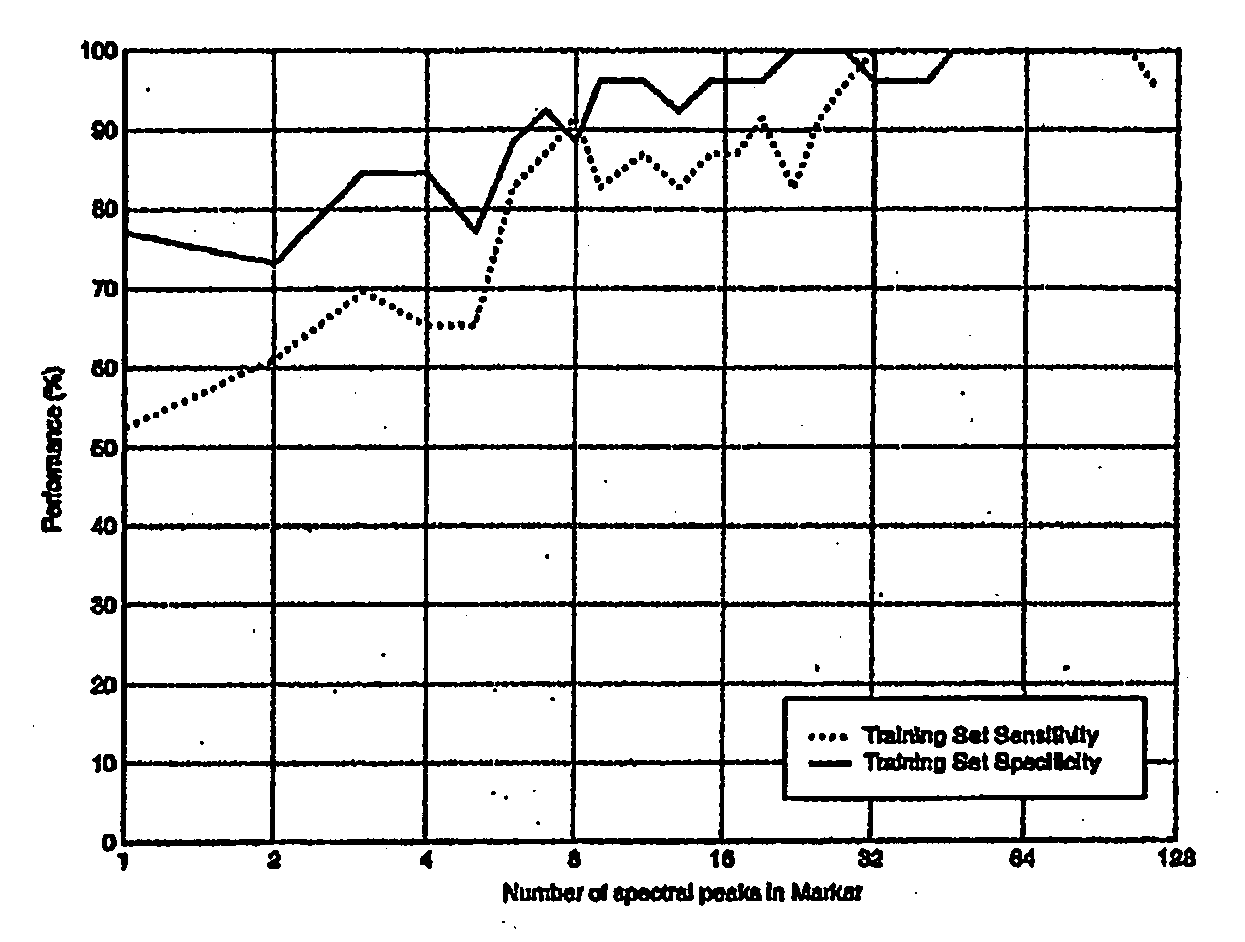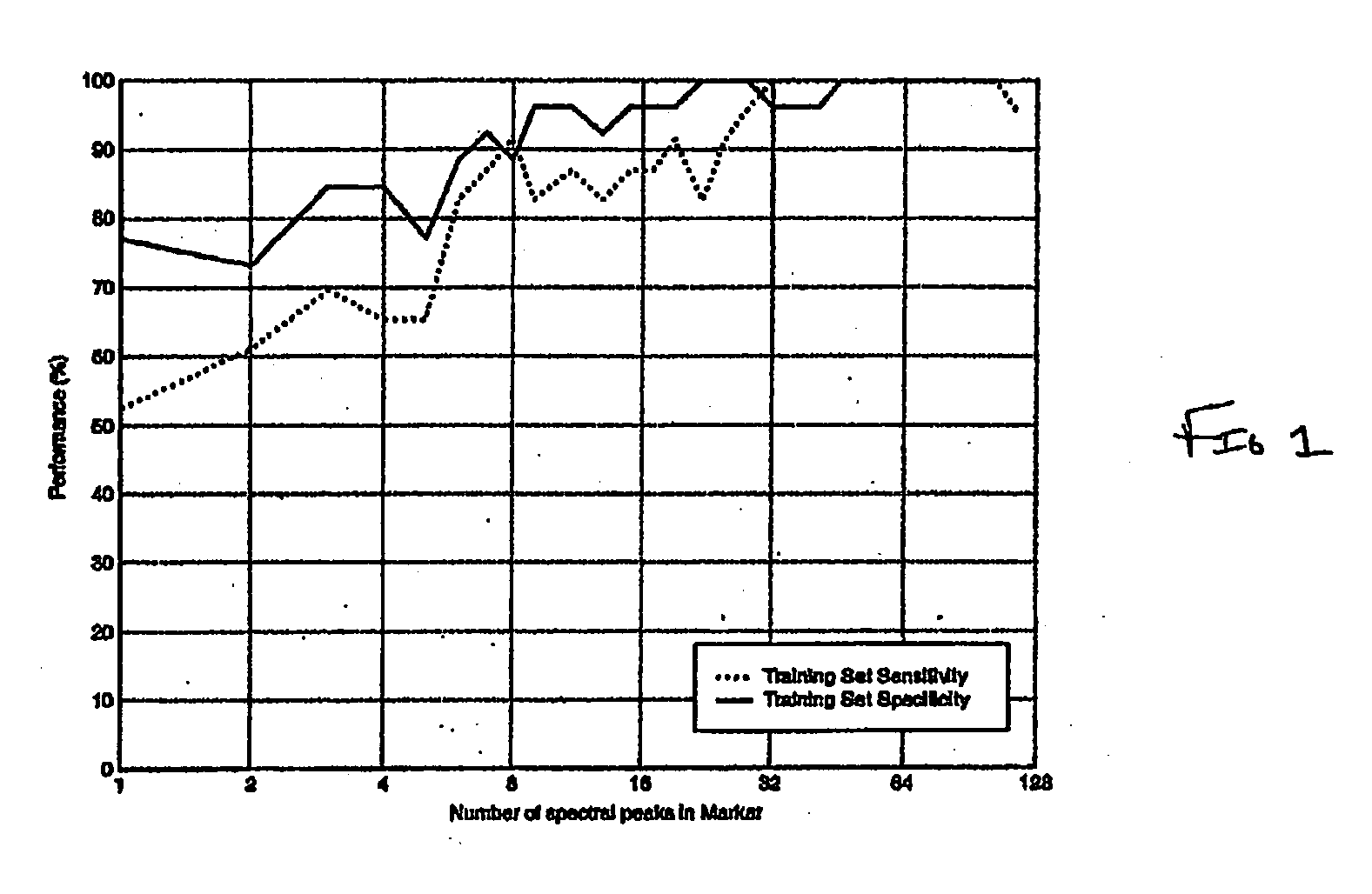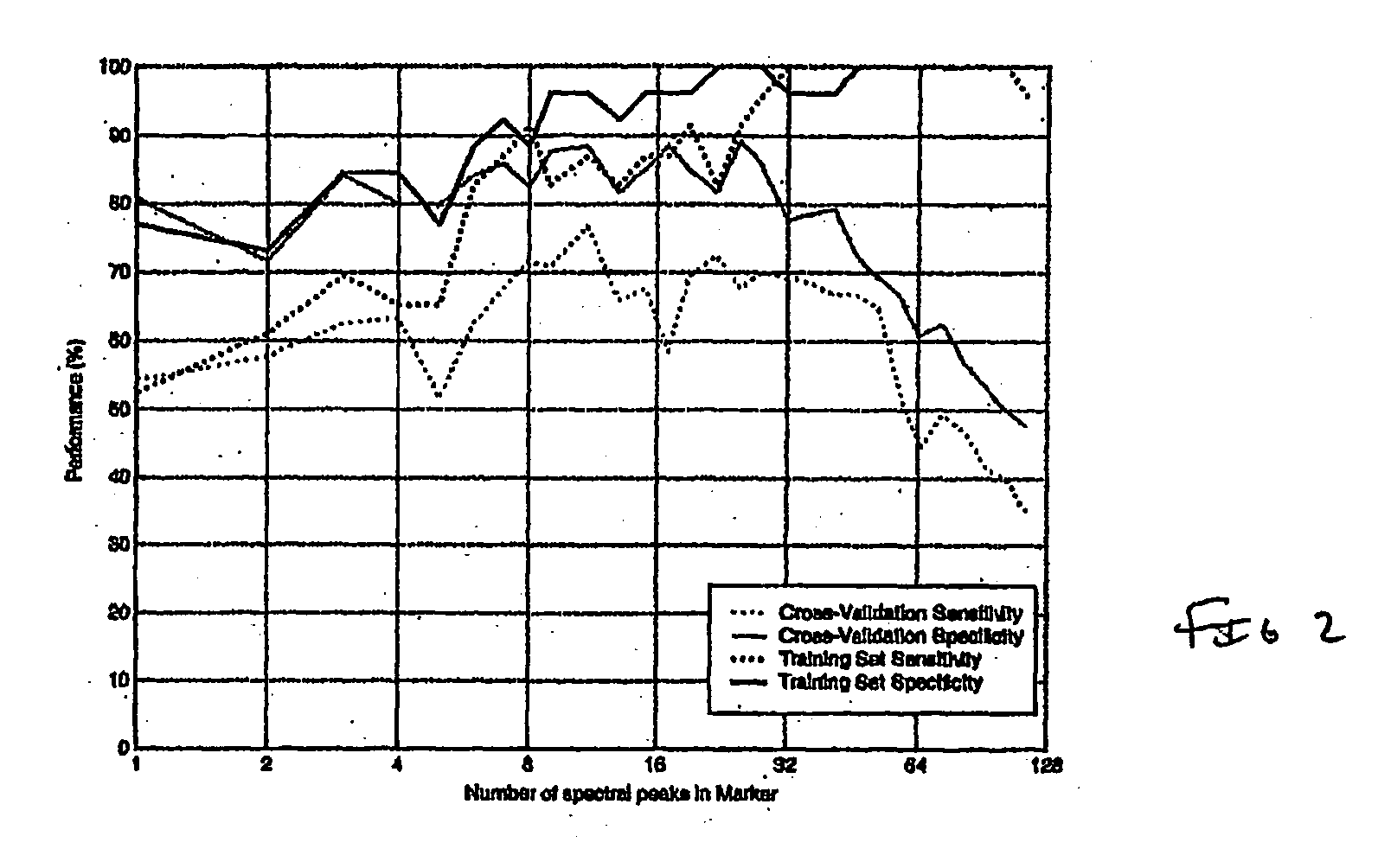Methods for Detecting Alzheimer's Disease
a technology for alzheimer's and methods, applied in the field of methods for detecting alzheimer's disease, can solve the problems of no laboratory diagnostic test for alzheimer's disease, difficult diagnosis, time-consuming and laborious, etc., and achieves the effects of low false positive rate, high specificity, and low cos
- Summary
- Abstract
- Description
- Claims
- Application Information
AI Technical Summary
Benefits of technology
Problems solved by technology
Method used
Image
Examples
example 1
[0063]This example describes the methodology used to identify markers for Alzheimer's disease. Briefly, bioanalytical and statistical analyses were conducted on urine of subjects diagnosed with Alzheimer's disease (AD), Control (CTRL) subjects, and Mild Cognitive Impairment subjects (MCI). As a result, unique spectral peaks that characterize molecules were generated. Following data manipulation and statistical analysis, a subset of these peaks was identified that could classify subjects as having AD or being CTRL with varying degrees of sensitivity. The molecules characterized by this subset of peaks were then designated as the markers of interest. Ultimately, a group of fourteen markers were shown to achieve the best specificity and sensitivity.
[0064]The spectral peaks were generated as follows. A liquid-chromatography (“LC”) / mass spectrometry (“MS”) analysis was performed using a high performance liquid chromatography system (“HPLCS”) (an Alliance Waters 2690 separation module ava...
PUM
| Property | Measurement | Unit |
|---|---|---|
| mean diameter | aaaaa | aaaaa |
| length | aaaaa | aaaaa |
| length | aaaaa | aaaaa |
Abstract
Description
Claims
Application Information
 Login to View More
Login to View More - R&D
- Intellectual Property
- Life Sciences
- Materials
- Tech Scout
- Unparalleled Data Quality
- Higher Quality Content
- 60% Fewer Hallucinations
Browse by: Latest US Patents, China's latest patents, Technical Efficacy Thesaurus, Application Domain, Technology Topic, Popular Technical Reports.
© 2025 PatSnap. All rights reserved.Legal|Privacy policy|Modern Slavery Act Transparency Statement|Sitemap|About US| Contact US: help@patsnap.com



